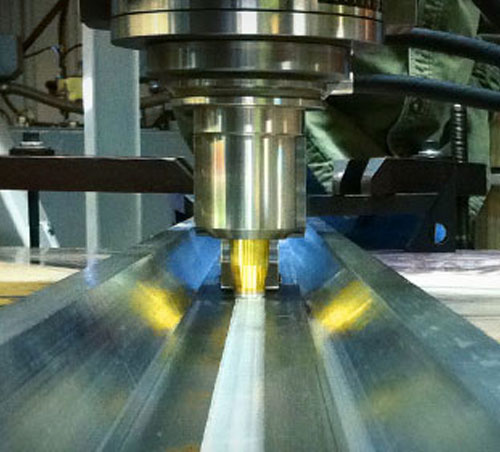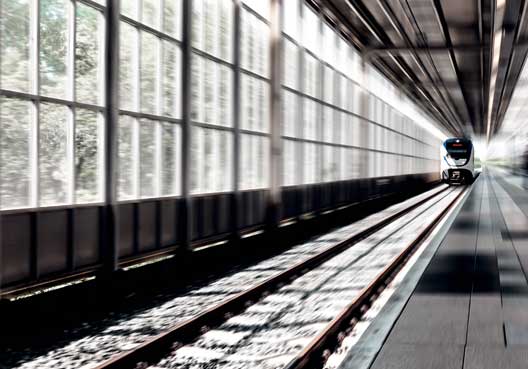Rail
Wolverine industries
Roofs | Floors | Side Walls | Panels | Engineered Beams | Load Bearing Sides | Cantrails | Posts
Railway manufacturers have been using aluminum extrusions and friction stir welding for over 20 years. Friction stir welding is ideal for welding long seams, making it suitable for rail cars. Wolverine can produce:
LARGE SKINS
Roofs | Floors | Side Walls | Panels
INTEGRATED STRUCTURAL SYSTEMS
Engineered Beams | Load Bearing Sides | Cantrails | Posts

Lower factory fabrication and assembly times resulting in superior quality rail cars delivered in a fraction of the time
Superior Precision in large panel construction is obtained by a unique automated fabrication process

Improve structural load carrying capabilities by using friction stir welding joined aluminum
Reduce product weight
Applications
Traditional welding techniques require melting material and can cause the growth of precipitate particles in the heat-affected zone, which drastically reduces strength. Friction stir welding, which requires only the brief softening of the alloy, is much less problematic.
Rail remains one of the fastest and safest ways to travel; however, companies looking to make their railcars safer have turned to friction stir welding. One of the most striking successes in the use of FSW is its suitability for successfully making long, butt seam welds in aluminum railway carriages. Friction stir welded panels are stronger, higher quality, and last longer. These panels are also more

